Bali is this incredibly vibrant island where every day feels like a mix of adventure and serenity 🌞🌴. You can wake up to the sounds of the ocean or a jungle breeze, spend the morning wandering through rice fields 🌾, and end the day with your feet in the sand watching a fiery sunset over the waves 🌅. The island has a spiritual heartbeat you can actually feel 🕯️. Temples pop up around every corner, and locals place offerings of flowers and incense in front of homes, shops, and even scooters it’s part of everyday life 💐🛵, and it gives Bali this calm, respectful energy, even in the busiest areas.
🌴Getting Around In Bali
🚗 Getting Around Bali – A Local Traveler’s Take on Transportation
When I first landed in Bali, I had mixed feelings. As an Indonesian myself, I thought I’d have it all figured out but it turns out, Bali plays by its own set of transport rules! 😄 There’s no MRT like in Jakarta, and the public transport isn’t as structured as in bigger cities but that’s exactly what makes getting around here so memorable.
In places like Kuta and Seminyak, the streets are alive with honking horns and zipping motorbikes 🛵. But head over to Ubud and the vibe shifts quiet roads, lush rice fields, and walking becomes a peaceful part of the journey 🚶♀️🌿. Transportation in Bali definitely matches the island’s famously laid-back lifestyle.
From my experience, the main ways to get around are by renting a scooter, using Grab or Gojek 🚗, or hiring a private driver if you're heading farther out. I’ll share tips on must-have apps, cost-saving tricks, and the best options depending on whether you're a solo traveler, with family, or traveling with seniors. And don’t forget to check the weather in Bali to plan smarter! ☀️
🚌 Buses and Airport Shuttles in Bali
If you’re used to TransJakarta or Damri in Indonesia, Bali’s bus system might feel a bit different, more relaxed, more flexible, but still a budget-friendly and convenient way to explore the island. 🏝️
🚌 Local Bus System Overview
Bali has a public bus service called Trans Sarbagita, which operates between cities like Denpasar, Nusa Dua, and Jimbaran. Honestly, it’s mostly used by locals and doesn’t run very frequently. For tourists, more popular options are tourist shuttles like Perama Tour, or shuttle services provided by hotels.
📍 When & Where to Use the Bus
Use the bus when:
- You want to enjoy a scenic ride from one town to another, like Kuta to Ubud 🏞️
- You’re looking for a budget option for getting between tourist areas
Some tourist shuttles also run to ports like Padang Bai (for Gili Islands connections).
💳 How to Pay & Ride
- For Trans Sarbagita, payment is cash only (IDR) prepare exact change.
- Tourist shuttles like Perama can be paid on-site or booked online/through an agent.
- No tap-in/tap-out system, just board at the front and get off from the back or as directed by the driver.
🕒 Timings & Frequency
- Trans Sarbagita runs from around 6:00 AM to 6:00 PM
- Tourist shuttles usually operate 2 - 4 times a day on fixed schedules
- There aren’t many bus services at night, so plan ahead if traveling late
✈️ Airport Shuttle / Bus
From Ngurah Rai Airport, you can take a hotel shuttle, official airport taxi, or book an airport transfer.
Shuttles are best when:
- You arrive late at night
- You have large luggage or are traveling with family
- You want a direct ride to your hotel with no hassle
✅ Pros & Who It’s Good For
- Great for budget travelers, backpackers, or those who enjoy slow travel
- Some routes offer beautiful scenery along the way 🌿
- Compared to Singapore buses, Bali’s are more traditional and not always punctual, but that’s part of the charm 😄
⚠️ Watch-Outs
- Some bus stops are unmarked or unclear
- Schedules can change without notice, especially during local ceremonies
- Bus tracking apps aren’t very reliable, so it’s better to ask locals or your hotel staff
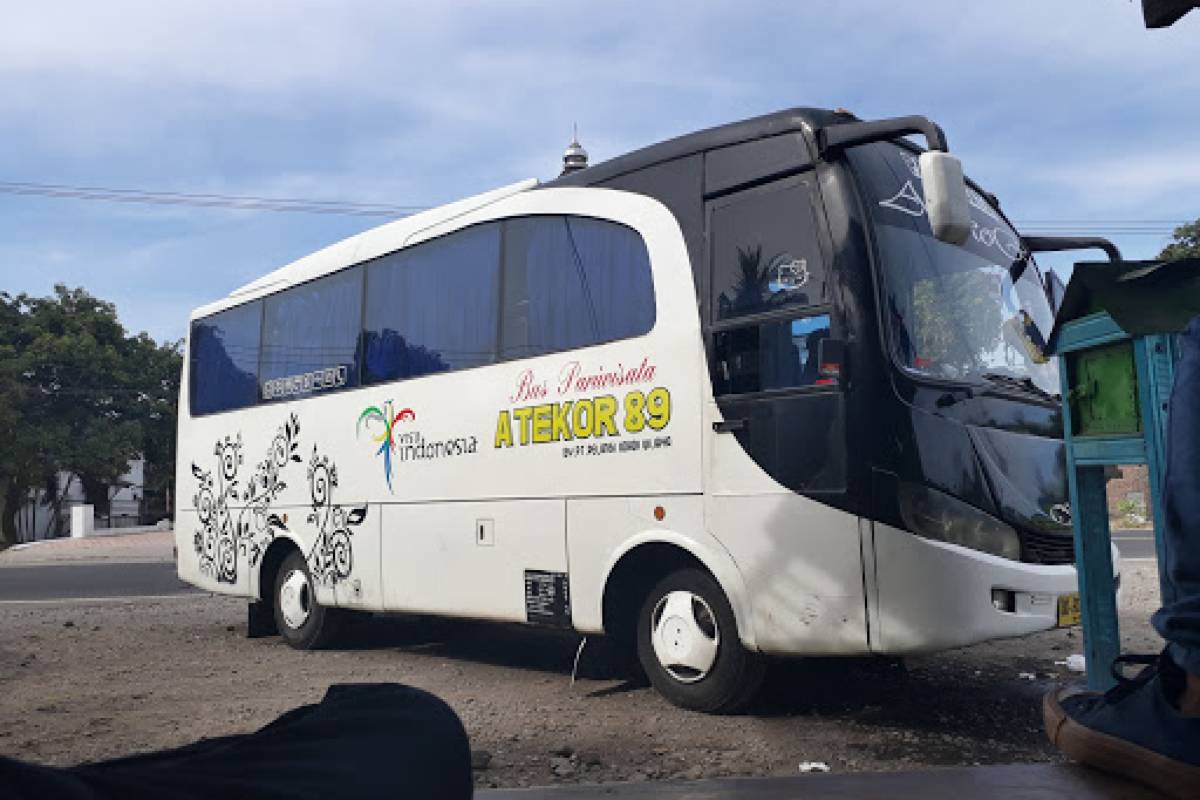
Flight To Bali
- Satu Arah
- Pulang-Pergi
- direct cheapest
 CGK15:401h 55mLangsungDPS18:35Jakarta - Bali|Sel, 6 Jan|Lion AirSEK 328SEK 36610% off10% offSEK 366SEK 328
CGK15:401h 55mLangsungDPS18:35Jakarta - Bali|Sel, 6 Jan|Lion AirSEK 328SEK 36610% off10% offSEK 366SEK 328  CGK19:301h 50mLangsungDPS22:20Jakarta - Bali|Sel, 6 Jan|TransNusaSEK 332SEK 3669% off9% offSEK 366SEK 332
CGK19:301h 50mLangsungDPS22:20Jakarta - Bali|Sel, 6 Jan|TransNusaSEK 332SEK 3669% off9% offSEK 366SEK 332 CGK18:551h 55mLangsungDPS21:50Jakarta - Bali|Sel, 6 Jan|Airasia IndonesiaSEK 332SEK 3669% off9% offSEK 366SEK 332
CGK18:551h 55mLangsungDPS21:50Jakarta - Bali|Sel, 6 Jan|Airasia IndonesiaSEK 332SEK 3669% off9% offSEK 366SEK 332 CGK14:051h 55mLangsungDPS17:00Jakarta - Bali|Sel, 6 Jan|Super Air JetSEK 340SEK 340
CGK14:051h 55mLangsungDPS17:00Jakarta - Bali|Sel, 6 Jan|Super Air JetSEK 340SEK 340 JKT1:00 PM3h 5mLangsungDPS2:00 PMJakarta - Bali|Sun, Jan 4|Lion AirTemukan Penerbangan LainnyaTemukan Penerbangan Lainnya
JKT1:00 PM3h 5mLangsungDPS2:00 PMJakarta - Bali|Sun, Jan 4|Lion AirTemukan Penerbangan LainnyaTemukan Penerbangan Lainnya
Harga penerbangan yang ditampilkan dari ${{departCityName}} ke ${{arrivalCityName}} didasarkan pada rata-rata harga berbagai maskapai untuk 3 bulan ke depan, menurut basis data terbaru Trip.com.
🚖Taxis and Ride-Hailing Apps in Bali
If you're planning a trip to Bali and prefer private, door-to-door transport, taxis and ride-hailing apps can make your journey much more convenient especially if you're traveling with kids, carrying lots of luggage, or arriving late at night. Here's everything you need to know to ride smart and safe on the Island of the Gods. 🙌
🚖 Availability & Reputation
Taxis are easy to find in popular areas like Kuta, Seminyak, Legian, and Ubud, but they’re not always the most reliable. Some are regulated, but others may refuse to use the meter or charge inflated prices especially near tourist hotspots.
In contrast, ride-hailing apps like Grab and Gojek have become the go-to choice for many locals and visitors. They’re more transparent, easier to use, and allow you to see fares upfront before committing. 👍
📱 Popular Ride-Hailing Apps
The top ride-hailing options in Bali are:
- Grab: Reliable, widely used, and offers cars, bikes, and food delivery.
- Gojek: Local Indonesian app with similar features great for short rides and motorbikes.
Both are available on App Store and Google Play, and support in-app payments, promo codes, and even English language settings for easy use.
💸 Fare Estimates & How to Pay
- A ride from Ngurah Rai Airport to Seminyak usually costs around Rp 120.000 - Rp 180.000
- Taxis may use a meter, but often negotiate a fixed fare, especially in tourist zones
- App-based rides often include tolls and have transparent pricing
- Payments can be made via cash, e-wallets, or linked credit cards, depending on the app
- Some apps offer promo fares or discounts during off-peak hours 💡
🛬 Airport Pickup Info
At Ngurah Rai International Airport, official taxis are available from the designated taxi counter just outside the arrivals area. Ride-hailing pickups are allowed in certain zones, but may require a short walk outside the terminal.
To skip the hassle, consider booking a Trip.com airport transfer in advance especially helpful if you're arriving at night or with a lot of luggage. ✈️🎒
✅ Best for These Travelers
Taxis and apps are perfect for:
- Families with young kids 👨👩👧👦
- Senior travelers who value comfort
- Those arriving during late hours or staying in less-connected areas like Uluwatu or Sidemen
- Anyone wanting a hassle-free ride straight to their hotel
⚠️ Things to Watch Out For
- Some taxi drivers may say the meter is “broken” always confirm before riding
- Avoid unofficial drivers or touts who approach you in tourist areas or at the airport
- During rainy weather or peak times, ride-hailing availability may drop, so plan ahead
- In some areas, local bans or tensions may limit ride-hailing services ask your hotel for advice
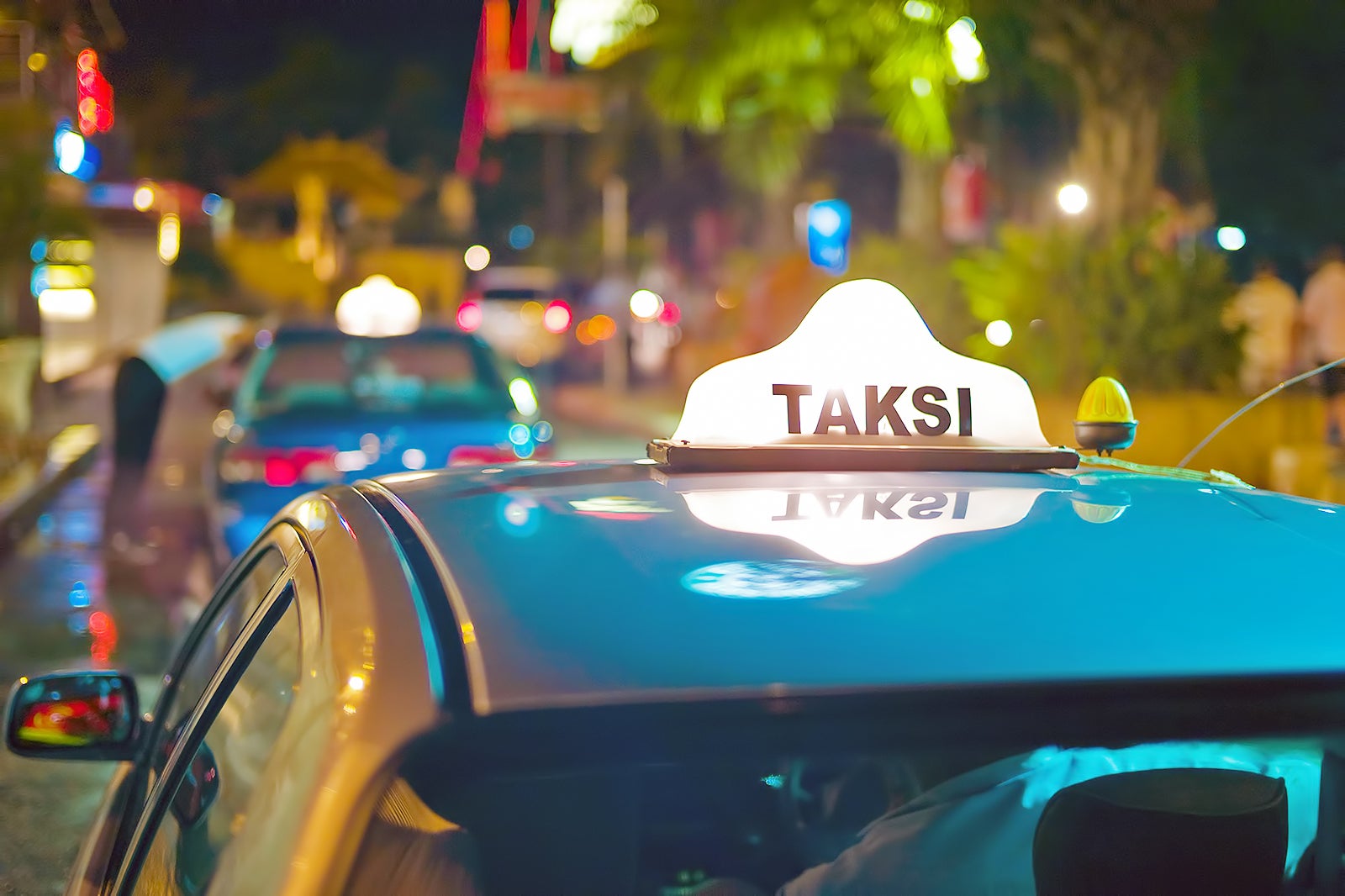
(Source: Google Page)
🚶 Exploring Bali on Foot
Bali, with its unique mix of lush nature, cultural richness, and stunning beaches, is a wonderful place to explore on foot. If you're from Indonesia, you'll find walking here to be similar to strolling through Ubud or old neighborhoods in Jakarta, but with a tropical twist. 🌴✨
🚶 Is Bali Walkable?
Bali isn’t built like a classic walkable city, but in tourist-friendly hubs like Ubud, Seminyak, and Canggu, you’ll find clusters of cafes, boutiques, markets, and temples that are best explored on foot. These areas have a laid-back vibe, and walking lets you stop spontaneously at a warung, snap a photo of a roadside offering, or enjoy the local rhythm.
In contrast, busier roads outside these zones especially in places like Kuta or Denpasar can feel more hectic and less enjoyable to walk along.
🛣️ Sidewalks, Crossings & Navigation
Sidewalks in Bali can be a mixed bag. In Ubud, you’ll find more walkable lanes, but don’t be surprised if you come across uneven pavements, potholes, or sudden stairs. Some sidewalks double as scooter parking too, so you’ll need to stay alert! 😅
🗺️ Maps, Signage & Safety
Google Maps works quite well in most of Bali, especially for walking routes in town centers. Street signage is usually in Bahasa Indonesia, but popular tourist zones often include some English.
In terms of safety, central areas are generally safe to walk even after dark but stick to well-lit and busier streets, especially if you're solo. Some rural or beachside roads can get very dark at night.
🌦️ Weather Considerations
Walking in Bali is most enjoyable in the morning or late afternoon. Midday sun can be intense, and sudden tropical rain showers are common especially during the wet season. Don’t forget your hat, sunscreen, or a foldable raincoat! ☀️🌧️
If you're wondering when the best time to walk around is, check out the weather in Bali guide to plan ahead.
📸 Scenic Walks or Hidden Gems
For a beautiful, chill walk, try the Campuhan Ridge Walk in Ubud lush greenery, rice terraces, and peaceful vibes await 🌿✨. The Canggu shortcut and Sanur beach path are also popular for seaside strolls and café-hopping by foot.
Night markets like Gianyar Night Market are fun to explore on foot too just bring small change and a big appetite! 🍢🛍️
✅ Who It’s Great For
Walking is ideal for:
- Solo travelers exploring cafés and galleries
- Couples looking for romantic sunset paths
- Photo lovers and culture seekers in temple-filled towns
- Anyone staying in central or walkable districts
⚠️ What to Watch Out For
- Narrow sidewalks or lack of footpaths on busy roads
- Scooters using sidewalks or parked along them
- Limited shade in some routes, especially around coastal areas
- Construction zones can suddenly block paths
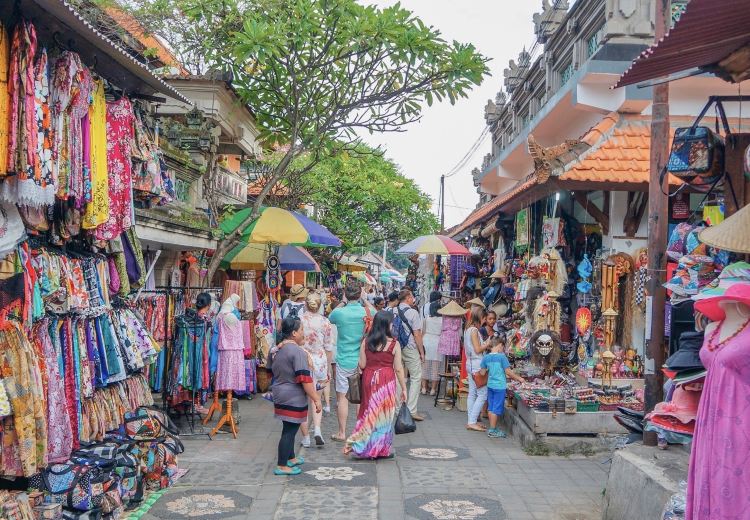
Recommended Hotels In Bali
🚖 Iconic Modes of Transport in Bali
Bali isn’t just about stunning beaches and temples, it’s also home to some charming, locally iconic transport options that you’ll want to try out. Whether you're a seasoned traveler or just curious, these modes of transport are an unforgettable part of the island’s culture!✨
🚋 What It Is & Where to Find It:
One of the most iconic and unique ways to get around Bali is by Bemo (minivans) or Ojek (motorbike taxis). These colorful little vehicles are woven into Bali’s charm, and they’ll take you on a ride through the local streets while offering a true taste of Balinese life.
- Bemo: These are small, shared minibuses that follow set routes around towns and villages. You’ll often find them near local markets, bus terminals, or popular tourist areas like Ubud or Denpasar.
- Ojek: If you're feeling a bit adventurous, hop on an Ojek! These are motorbike taxis, and they’re commonly available on the streets, especially in tourist spots like Kuta or Seminyak. You’ll notice drivers hanging out on street corners, ready to zip you to your next destination.
💰 Cost & How to Ride:
- Bemo: Fares are affordable, usually ranging from Rp 5.000 - 15.000 depending on the distance. Locals might pay less, and tourists should confirm the price before getting in. Negotiate politely, locals often do, and you'll want to make sure you’re paying a fair price, especially if you're heading on a longer journey.
- Ojek: A short ride on a motorbike taxi costs about Rp 10.000 - 25.000. Pricing varies, so it’s best to check the app (like Gojek) or agree on the price before hopping on. You can also book rides directly through Gojek or Grab apps, making it easier to avoid confusion with locals and ensuring a safe ride.
🎯 When It’s Worth Trying:
- Bemo: Perfect for short trips around local neighborhoods or when you want to experience Bali's culture up close. It’s great for cultural exploration and you'll get a feel for Bali beyond the usual tourist spots. Try it on a route like Ubud to Denpasar or between Canggu and Seminyak you’ll see the real Bali, away from the crowds.
- Ojek: These are best for avoiding traffic or getting to off-the-beaten-path destinations like a remote café or hidden temple. Motorbike rides also provide a great opportunity to enjoy the breeze and take in the island’s lush scenery.
⚠️ Things to Watch Out For:
- Bemo: While Bemos are generally safe, make sure the driver understands your destination before you hop on. Watch out for overpricing, especially if you're not familiar with the route. It’s always good to confirm the fare first.
- Ojek: Safety first! Hold onto your belongings, and keep in mind that there are no seatbelts on motorbikes, so if you're not comfortable with the idea of zipping through traffic, an Ojek might not be for you. Also, negotiate or use the app to avoid being overcharged.
✅ Who It’s Great For:
- Adventurous travelers who want to experience the real Bali
- Culture seekers eager to try traditional modes of transport
- Those who want to skip traffic in the busy tourist spots
- Not ideal for families with small children, elderly travelers, or those with lots of luggage.
📸 Fun or Cultural Notes:
Riding in a Bemo offers a sensory experience: you’ll hear the rattle of the engine, catch the scent of street food from the markets, and greet friendly locals along the way. For Ojek rides, hang on tight and enjoy the wind in your hair as you zoom past Bali's lush rice fields, temples, and beach views. It’s a thrilling way to see Bali’s beautiful landscape!
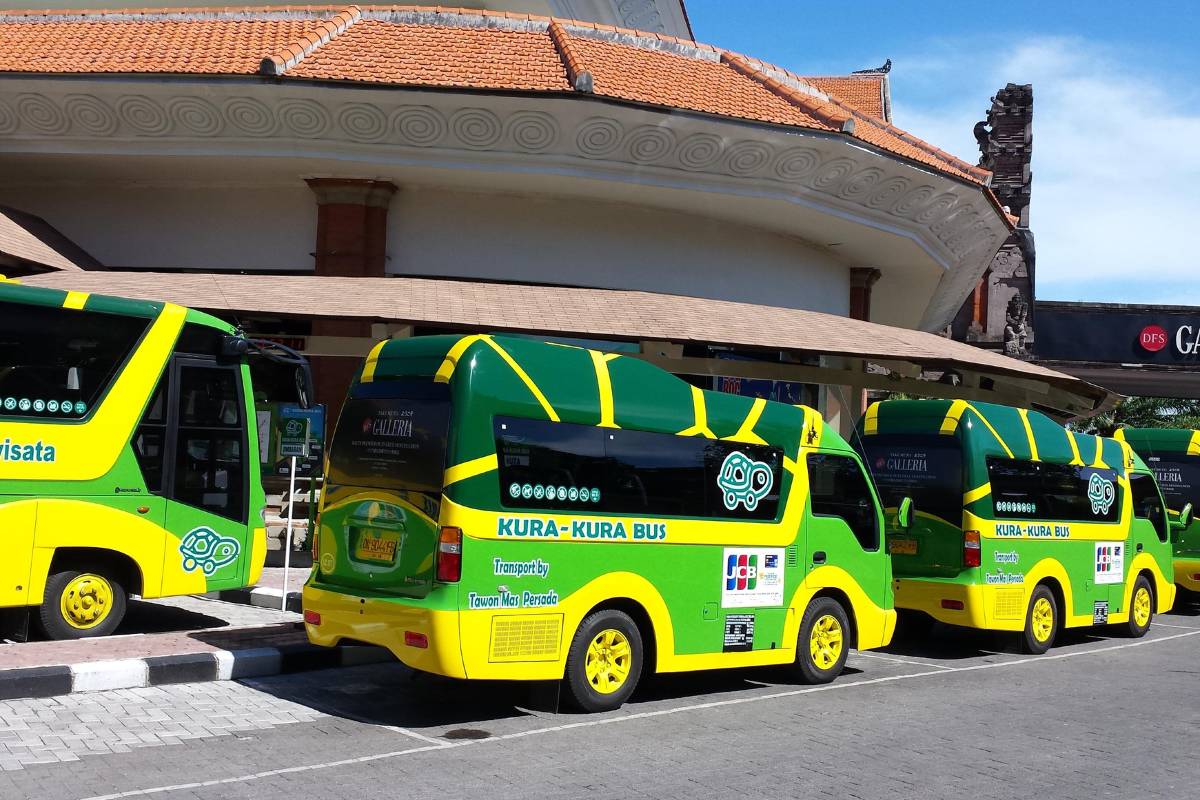
🚤 Water-Based Transport in Bali
Bali, with its stunning coastlines and rich culture, offers a unique experience when it comes to water-based transport. From serene boat rides to lively ferry journeys, getting around by water is not only practical but also a great way to take in the island’s natural beauty. Whether you’re exploring the coastline or crossing to nearby islands, here's what you need to know!
⛴️ What’s Available
Bali’s water transport options are both scenic and functional, with various ways to get around or enjoy the island’s beauty from the water.
- Public Ferries: If you're looking to head to Nusa Penida, Nusa Lembongan, or Nusa Ceningan, the ferries that depart from Sanur or Padang Bai are your best bet. These are popular public services connecting Bali to nearby islands, and they’re generally reliable. Expect open-air seating with stunning views of the water and surrounding islands.
- Water Taxis: For a more private experience, Bali offers water taxis, particularly around Jimbaran Bay and Sanur. You can hire these for short trips, like getting to a resort by water, or simply enjoying a relaxed ride along the coast.
- Traditional Jukung Boats: For something truly unique, try riding in a Jukung, a traditional Balinese boat commonly seen in Sanur and Canggu. These colorful, narrow boats are often used by local fishermen but can also be rented by tourists for sunrise or sunset cruises, offering a more intimate and scenic way to see Bali’s beaches.
🗺️ Where It Goes
Water transport in Bali is primarily focused on either inter-island travel or getting around coastal areas.
- Sanur Port: This is a major hub for ferries heading to nearby islands like Nusa Penida and Nusa Lembongan. You’ll find plenty of options here, ranging from budget ferries to more upscale boats.
- Padang Bai: Another popular terminal, this port connects Bali to Lombok and the Gili Islands.
- Jimbaran Bay & Canggu: Perfect for private water taxis or hiring Jukung boats, especially if you're looking for a romantic sunset ride or want to explore Bali's coastline in style.
- Amed: A quieter, more scenic area for traditional boat rides.
💸 Tickets & How to Ride
- Ferries: You can purchase tickets at the port or online for most of Bali’s inter-island services. The cost range for ferries to nearby islands is usually between Rp 100,000 - 300,000, depending on the destination. If you’re traveling to Nusa Penida or Lombok, prices tend to be similar. Queues can get long, especially during peak times, so it’s a good idea to arrive early.
- Water Taxis: For private water taxis, prices vary based on distance but expect to pay around Rp 150.000 - 500.000 for short trips. Many taxis can be booked directly from hotels or resorts, and there’s usually no need for advance tickets. You can also negotiate the price beforehand, but make sure to clarify the fare.
🕒 Timings & Frequency
- Ferries: Generally run daily with departures in the morning and early afternoon, though you may find occasional evening ferries to Nusa Penida. Service is regular, especially in Sanur or Padang Bai, but it’s wise to check schedules in advance during the rainy season.
- Water Taxis & Jukung Boats: Operate more flexibly, with services available throughout the day. The best times for scenic cruises or boat rentals are early morning or late afternoon for the perfect sunrise or sunset views.
🎯 Who It’s Best For:
- Sightseers and nature lovers: Water transport in Bali offers some of the best views of the island’s coastline, temples, and even wildlife!
- Families and romantic couples: A boat ride, especially in a Jukung, can be a romantic or family-friendly activity.
- Adventurous travelers: For those willing to go beyond the usual tourist trails, water transport is a unique way to explore Bali from a fresh perspective.
⚠️ Watch-Outs or Considerations
- Safety: Make sure the boats are well-maintained, and if you’re taking a Jukung, be aware that it may feel unstable for elderly or those with mobility challenges.
- Weather: Bali's water traffic can be impacted by weather, so it's always wise to check the weather forecast before planning your trip. Rough seas can delay or cancel some ferries, especially during the rainy season.
- Exposure to the elements: Many of Bali’s water transport options, especially the ferries and Jukung boats, are open-air, so you’ll want to be prepared for exposure to the sun or rain—don’t forget your sunscreen or umbrella!
📸 Local Flavor
There’s something uniquely magical about seeing Bali’s temples from the water or drifting past colorful fishing boats. As you take a ride along the coast, you might spot monks on boats, local fishermen hauling in their catch, or a serene sunset over the ocean; these are the types of moments that make Bali's water transport so special! 🌅⛵
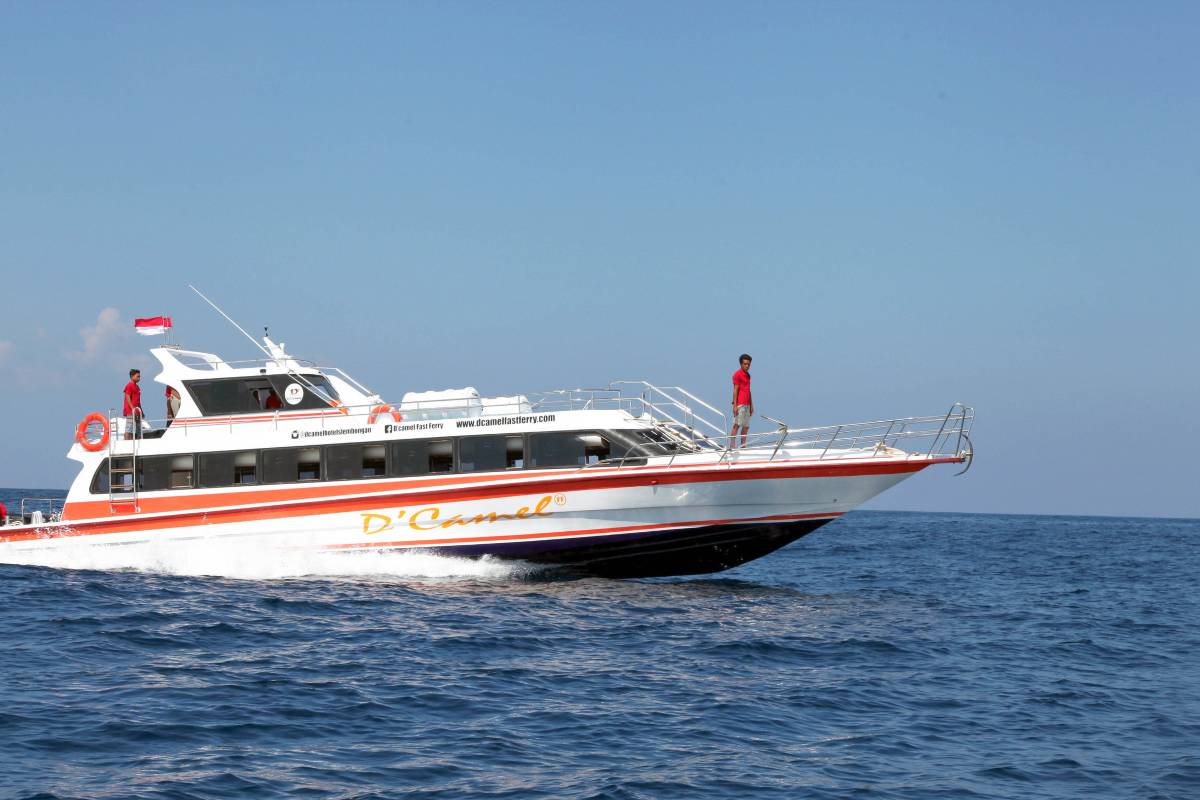
🚘 Renting a Car and Driving in Bali
Driving in Bali can be a great option for some travelers, but it can also be a bit of a challenge if you’re used to organized roads and strict driving rules. While the island’s scenic routes and remote areas offer plenty to explore by car, you’ll need to carefully consider whether driving in Bali fits your itinerary and comfort level.
🚘 When It Makes Sense to Drive
Driving in Bali can be practical if you're looking to explore areas that aren’t easily accessible by public transport, like Ubud, Bedugul, or even remote beaches. It’s also an ideal choice if you’re traveling with kids or a group, or if you plan to take a road trip to explore the countryside at your own pace.
However, driving in busy tourist areas like Kuta, Seminyak, or Denpasar can be stressful due to heavy traffic, narrow streets, and unpredictable road conditions. If your trip is mostly centered around the beach or walking around town, using ride-hailing apps or taxis might be a better choice.
📍 Where to Rent a Car
You can rent a car directly from Bali’s Ngurah Rai Airport at the car rental counters or from various city outlets. If you prefer to book ahead, using platforms like Trip.com makes it easy to compare car rental options in Bali. 👉 Compare car rentals in Bali
📄 Requirements for Tourists:
- International Driving Permit (IDP): Yes, you’ll need an IDP in addition to your local driver’s license to drive legally in Bali.
- Minimum Age: The minimum age for renting a car is typically 21 years, and some rental agencies may require you to be 25 or older for certain cars.
- Documents: Bring your passport, driver’s license, and credit card for the rental process. Make sure to check with the rental agency for any additional documents they might need.
- Insurance: You’ll be required to take out local insurance when renting a car. Most rental agencies will offer basic and premium insurance options.
💸 Cost Overview
- Daily rental rates in Bali can range from Rp 300.000 - 700.000 (approximately USD 20 - 45), depending on the type of car and rental company.
- A deposit is usually required (around Rp 1.000.000 or more, depending on the car).
- Fuel policies typically follow a full-to-full approach, so you’ll need to refill the tank before returning the car.
- Additional costs may include tolls, parking fees, and congestion charges if driving in busy areas.
🛣️ Driving Conditions & Culture
- Traffic: Expect heavy traffic in urban areas, especially during peak hours. Roads can be crowded with motorcycles, buses, and pedestrians, and some areas have a chaotic driving style.
- Road Signs: While some signs are in English, many are in Indonesian. Make sure you’re comfortable with the local language or use a GPS app to navigate.
- Driving Style: Locals drive with a more relaxed approach and don’t always follow strict traffic rules. Be prepared for aggressive drivers and motorbikes weaving through traffic.
- Left-hand driving: Bali follows the left-hand side of the road, which may be different from what you're used to if you’re driving in a right-hand driving country.
⚠️ What to Watch Out For
- Narrow, winding roads: Bali’s hilly and mountainous areas have many steep and narrow roads that may feel uncomfortable to navigate, especially for new drivers.
- Parking: Parking in busy areas like Ubud or Seminyak can be tricky, and there are often restricted parking zones.
- Motorcycles: Expect motorbikes to cut in and out of traffic. Always keep an eye out for them.
✅ Ideal Travelers
Renting a car in Bali is ideal for families, business travelers, or couples planning day trips to the countryside or mountainous areas. If you’re keen on exploring Bali’s natural beauty or escaping the touristy crowds, having a car will give you the freedom to discover hidden gems at your own pace.
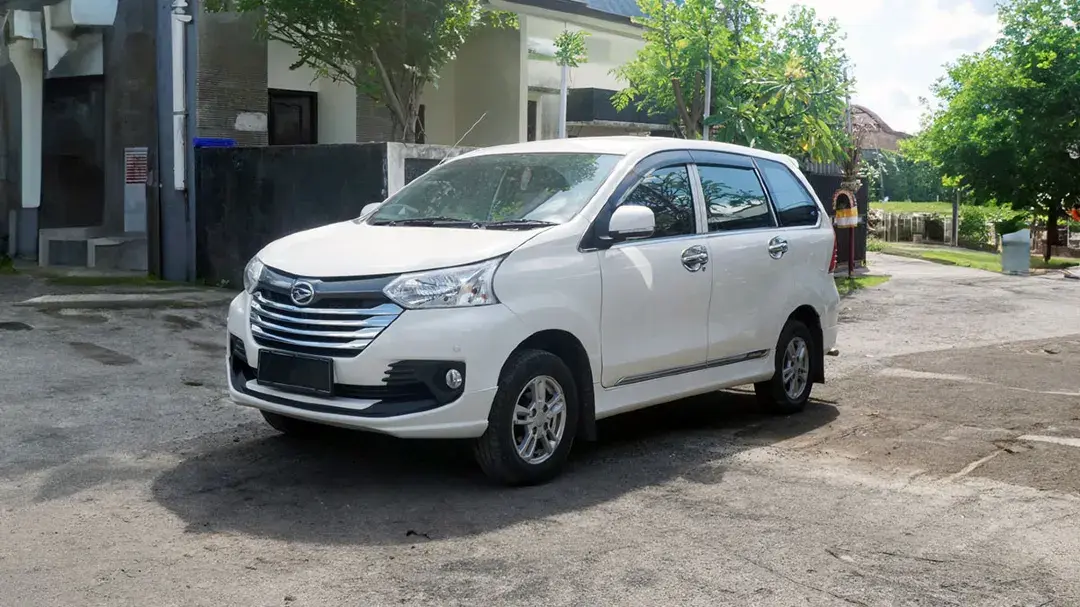
Flight To Bali
- Satu Arah
- Pulang-Pergi
- direct cheapest
 CGK15:401h 55mLangsungDPS18:35Jakarta - Bali|Sel, 6 Jan|Lion AirSEK 328SEK 36610% off10% offSEK 366SEK 328
CGK15:401h 55mLangsungDPS18:35Jakarta - Bali|Sel, 6 Jan|Lion AirSEK 328SEK 36610% off10% offSEK 366SEK 328  CGK19:301h 50mLangsungDPS22:20Jakarta - Bali|Sel, 6 Jan|TransNusaSEK 332SEK 3669% off9% offSEK 366SEK 332
CGK19:301h 50mLangsungDPS22:20Jakarta - Bali|Sel, 6 Jan|TransNusaSEK 332SEK 3669% off9% offSEK 366SEK 332 CGK18:551h 55mLangsungDPS21:50Jakarta - Bali|Sel, 6 Jan|Airasia IndonesiaSEK 332SEK 3669% off9% offSEK 366SEK 332
CGK18:551h 55mLangsungDPS21:50Jakarta - Bali|Sel, 6 Jan|Airasia IndonesiaSEK 332SEK 3669% off9% offSEK 366SEK 332 CGK14:051h 55mLangsungDPS17:00Jakarta - Bali|Sel, 6 Jan|Super Air JetSEK 340SEK 340
CGK14:051h 55mLangsungDPS17:00Jakarta - Bali|Sel, 6 Jan|Super Air JetSEK 340SEK 340 JKT1:00 PM3h 5mLangsungDPS2:00 PMJakarta - Bali|Sun, Jan 4|Lion AirTemukan Penerbangan LainnyaTemukan Penerbangan Lainnya
JKT1:00 PM3h 5mLangsungDPS2:00 PMJakarta - Bali|Sun, Jan 4|Lion AirTemukan Penerbangan LainnyaTemukan Penerbangan Lainnya
Harga penerbangan yang ditampilkan dari ${{departCityName}} ke ${{arrivalCityName}} didasarkan pada rata-rata harga berbagai maskapai untuk 3 bulan ke depan, menurut basis data terbaru Trip.com.
🚗 FAQ: Getting Around in Bali 🌴
🌟 What’s the best way to get around Bali?
Most travelers either rent a scooter 🛵 or hire a private driver 🚗 for the day. Taxis 🚕 and rideshare apps (like Grab and Gojek) 📱 are also popular in urban areas like Kuta, Seminyak, and Ubud.🚌 Are there buses or public transport options?
Yes, but limited. 🚌 Bali has services like Kura-Kura Bus 🐢 and local minibuses (bemos). However, schedules can be irregular ⏰ and routes mainly cover major tourist areas. Buses are cheap 💵 but not always convenient.🚖 Is it safe to use taxis in Bali?
Mostly yes! ✅ Stick to official taxis like Bluebird 🚖 (they use meters). Some independent taxis may try to overcharge tourists, especially in busy areas 🏙️.📱 Can I use rideshare apps like Grab or Gojek?
Definitely! 📱🙌 They’re affordable and super convenient. Just note that some tourist hotspots 🏖️ (like beaches and temples) restrict rideshare pick-ups — you might need to walk a little 🚶♂️.🚗 How much does it cost to hire a private driver?
Usually around 600,000 to 900,000 IDR per day (~$40–60 USD). 🚗💨 It’s a comfortable way to explore, and many drivers are also friendly local guides! 😊👟 Should I walk around Bali?
In areas like Ubud or Seminyak, yes! 👟🌸 It’s great for cafe hopping, shopping 🛍️, and beach strolls. But Bali overall isn’t very pedestrian-friendly — expect long distances and few sidewalks 🚧.⛴️ What about ferries to nearby islands?
If you're heading to Nusa Penida, Nusa Lembongan, or the Gili Islands, you'll need a fast boat ⛴️🌊. Boats leave from ports like Sanur, Padang Bai, and Serangan.



 NO.1
NO.1







